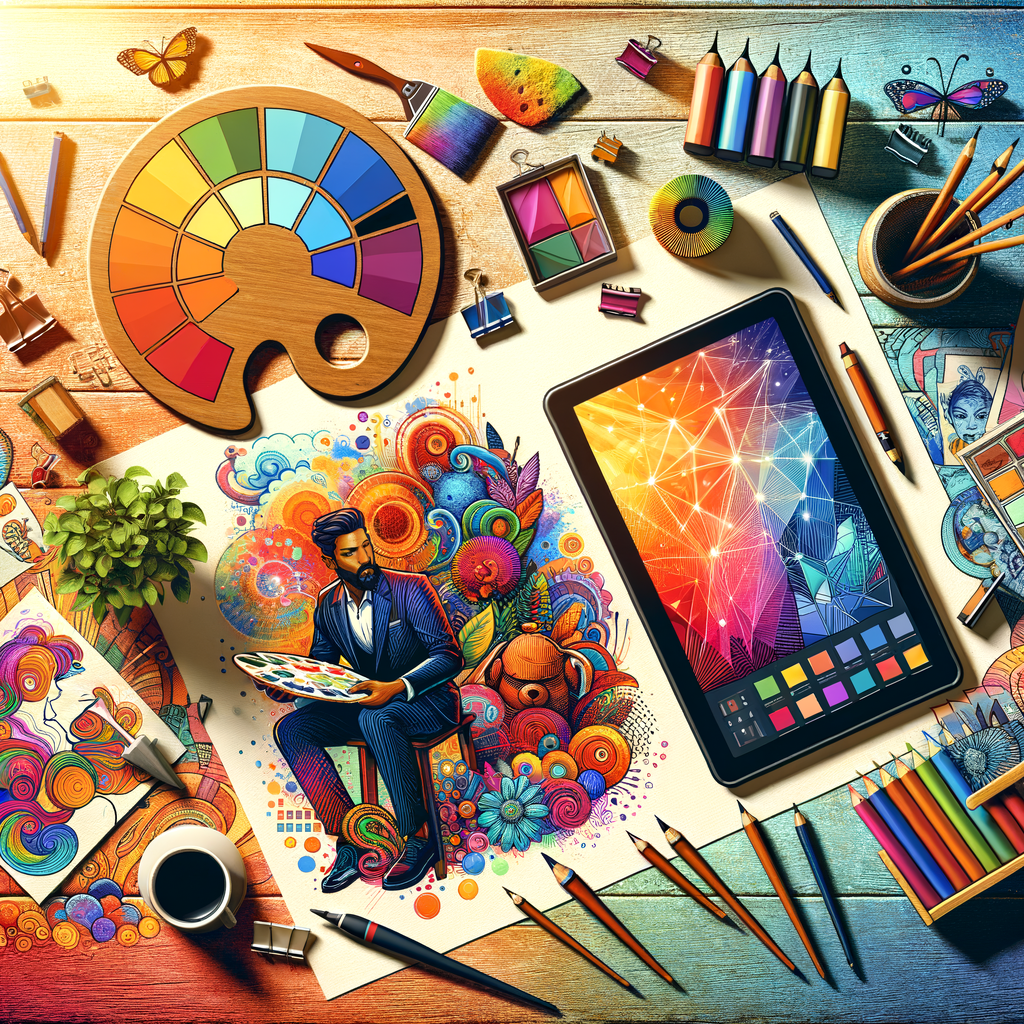
Understanding color theory is essential for any digital artist seeking to enhance their work. This article will dive deep into the concept of color, explain various color models, and provide practical tips on how to apply these concepts to your digital creations. From selecting the right palette to achieving harmony in your artwork, mastering these principles will undoubtedly take your art to new heights.
Color is one of the most powerful elements in art. It can evoke emotions, convey messages, and create depth and perspective in a composition. For digital artists, understanding how to manipulate color is crucial to creating impactful pieces.
In this guide, we will cover the fundamentals of color theory, including:
- The Color Wheel
- Color Models
- Color Harmony
- Color Schemes
- Practical Applications in Digital Art
By the end of this article, you will have a solid understanding of how to use color effectively in your digital paintings, leading to more vibrant and compelling artwork.
The Color Wheel
The color wheel is an essential tool for any artist. It visually represents colors arranged according to their chromatic relationship. Understanding the color wheel helps you see how colors relate and how you can combine them to create mood and effect.
A basic color wheel typically includes primary, secondary, and tertiary colors:
- Primary Colors: Red, blue, yellow. These colors cannot be made by mixing other colors and are the basis for creating all other colors.
- Secondary Colors: Green, orange, purple. These colors are made by mixing two primary colors.
- Tertiary Colors: These are made by mixing a primary color with a secondary color, resulting in hues like red-orange or blue-green.
Color Models
Different color models serve various purposes in digital art. Here are two of the most commonly used models:
- RGB (Red, Green, Blue): This model is used primarily in screens and digital displays. It works by mixing the three primary colors of light to create a broad spectrum of colors. When all colors are combined at full intensity, they produce white light.
- CMYK (Cyan, Magenta, Yellow, Black): This is the standard model used for color printing. It works by subtracting light from white surfaces, using the four ink colors to create a wide range of hues.
Color Harmony
Creating harmonious color combinations is crucial in any artwork. Here are some essential terms and concepts related to color harmony:
- Complementary Colors: Colors that are opposite each other on the color wheel (e.g., red and green). Using complementary colors together creates a vibrant look.
- Analogous Colors: Colors that are next to each other on the color wheel (e.g., blue, blue-green, green). They usually match well and create serene and comfortable designs.
- Triadic Colors: Three colors that are evenly spaced on the color wheel (e.g., red, yellow, blue). This color scheme is vibrant and colorful.
Color Schemes
Color schemes create different moods and convey emotions in your artwork. Here are a few popular color schemes:
- Monochromatic: Variations in lightness and saturation of a single color. This scheme creates a clean and cohesive look.
- Complementary: Using two opposite colors on the color wheel enhances contrast and vibrancy.
- Analogous: Similar colors are used side by side to create a harmonious look.
- Triadic: Using three colors that are evenly spaced on the color wheel adds variety while keeping harmony.
Practical Applications in Digital Art
Now that you understand the fundamentals of color theory, let’s delve into how to apply these concepts to your digital art.
Choosing a Color Palette
Choosing a color palette is one of the most critical decisions you make as an artist. Here are some tips:
- Start with a Base Color: Choose a primary color that fits the mood of your artwork.
- Add Accents: Select a couple of colors to use as accents. These colors should complement your base color.
- Consider Neutral Colors: Including neutral colors like grays or whites can help to balance out the vibrancy of your palette.
Using Brushes Effectively
The right brushes can significantly influence how colors are applied in your artwork. Experiment with various brushes to see how they interact with color. Some brushes create soft transitions, while others provide more defined edges.
Color Adjustments
One of the advantages of digital art is the ability to easily adjust colors. Use adjustment layers in your digital painting software to refine your color choices after you've painted.
Conclusion
Mastering color theory is an ongoing journey, but with practice and experimentation, you'll find that your ability to use color effectively in your digital art will grow tremendously. Remember that there are no strict rules—art is about expression. Feel free to explore, mix, and ultimately find the colors that resonate with your style.
By implementing the strategies in this guide, you’ll be on your way to creating more vibrant, engaging, and emotionally impactful artworks. Happy painting!

